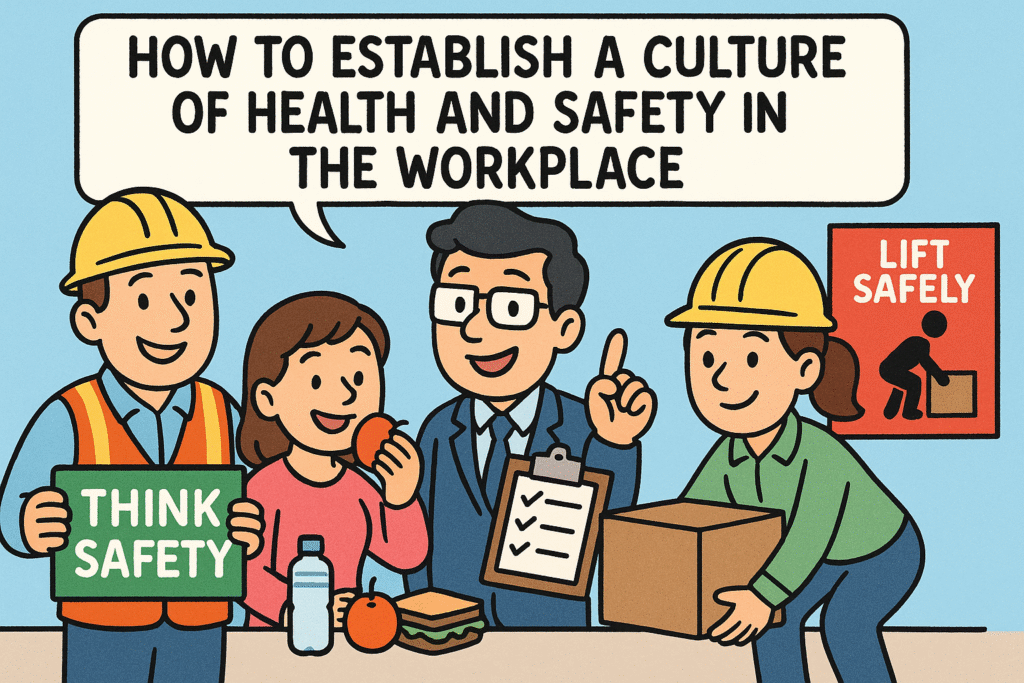Embed Safety into Daily Workplace Habits right from the beginning of each shift is the key to reducing workplace incidents and nurturing a proactive culture of care.
When safety becomes a habit—not just a checklist—employees become more aware, engaged, and protected.
This article outlines proven strategies to make safety a natural part of everyday work.
Daily Workplace Habits
Embed Safety into Daily Workplace Habits
Why Embedding Safety Matters
When organizations treat safety as a core value rather than a compliance requirement, they cultivate an environment of shared responsibility.
Embedding safety into daily workplace habits enhances productivity, reduces injuries, and boosts morale. The goal is to move from reactive to preventive behavior.
Start Every Day with a Safety-Focused Routine
Initiating the workday with safety routines like daily huddles, toolbox talks, or pre-shift checklists sets the tone.
These routines help employees mentally prepare and stay focused on potential risks associated with their tasks.
- Encourage teams to share safety observations.
- Review equipment, PPE, and environmental hazards.
- Involve everyone, from management to frontline workers.
Internal Link: Learn how to conduct effective Toolbox Talks.
Make Safety Visual and Accessible
Strategic use of visual cues helps reinforce safe behavior. Display:
- Color-coded safety signs and labels.
- Posters with site-specific hazards and PPE reminders.
- Digital dashboards showing real-time safety metrics.
Visual reinforcement helps embed safety into subconscious decision-making. Websites like Safeopedia and Canadian Centre for Occupational Health and Safety (CCOHS) offer downloadable materials and free posters (DoFollow).
Reinforce Through Micro-Learning
Safety training doesn’t need to be long to be effective. Deliver bite-sized safety refreshers throughout the week via:
- Short videos
- Quizzes
- Flash cards or digital reminders
This consistent, ongoing approach strengthens retention and boosts daily awareness.
Internal Link: Test your safety IQ with our IOSH Managing Safely Quiz.
Lead by Example – Top-Down Commitment
Employees watch what leaders do more than what they say. Supervisors and managers must model safe practices:
- Always wear appropriate PPE.
- Participate in safety meetings.
- Immediately correct unsafe behavior.
When leadership prioritizes safety visibly, it encourages staff to follow suit. Authentic leadership has a stronger impact than mandated compliance.
Integrate Safety into Job Descriptions and KPIs
Embedding safety into performance expectations ensures it stays front-of-mind. Examples include:
- Requiring a certain number of safety observations per month.
- Evaluating adherence to SOPs.
- Including safety contributions in performance appraisals.
This strategy elevates safety to the same importance as productivity and quality.
Encourage Near Miss Reporting
Many incidents are preceded by warning signs. Encouraging near-miss reporting allows companies to correct hazards before injuries occur.
- Create a non-punitive environment.
- Offer anonymous reporting channels.
- Act quickly on reports and share what actions were taken.
This promotes a culture of trust and continuous improvement.
Use Positive Reinforcement
Reward safe behaviors regularly with:
- Verbal praise
- Recognition boards
- Small incentives or safety points systems
Positive reinforcement makes safety feel rewarding, not restrictive. It helps employees view safety as something they “get to do” rather than something they “have to do.”
Foster Peer-to-Peer Accountability
Empowering employees to watch out for each other builds a team-oriented safety culture. Encourage:
- Friendly reminders when someone forgets PPE
- “See something, say something” protocols
- Joint hazard assessments
When coworkers hold each other accountable, safety becomes a shared mission.
Regularly Update Procedures Based on Feedback
Involving workers in updating policies and SOPs ensures relevance and practicality. Workers on the floor often have the best insight into:
- Inefficiencies in safety procedures
- Outdated signage or PPE practices
- Opportunities for hazard elimination
Encouraging feedback gives employees ownership over safety practices.
Empower Safety Champions
Identify and train passionate employees to become safety ambassadors or champions within each department.
Their roles can include:
- Sharing updates from safety committees
- Supporting new hires with onboarding
- Being a go-to person for safety questions
Safety champions help keep the momentum going at the grassroots level.
Celebrate Safety Milestones
Recognizing milestones, such as “100 Days Injury-Free,” can re-energize employees and provide clear goals to work toward.
Combine celebrations with reflection on how the milestone was achieved, reinforcing habits that work.
Continuously Evaluate and Adjust
Lastly, remember that embedding safety is an evolving process. Conduct regular audits, employee surveys, and safety walkthroughs. Track metrics such as:
- Participation in safety programs
- Incident trends
- Compliance with daily safety checks
Adapting your strategies ensures they remain effective over time.
Final Thoughts
To truly embed safety into daily workplace habits, organizations must go beyond policy. It requires active participation, cultural alignment, and day-to-day reinforcement. When safety becomes a reflex instead of a requirement, that’s when real culture change occurs.
Start today—embed safety in the little things, and you’ll see big results.

